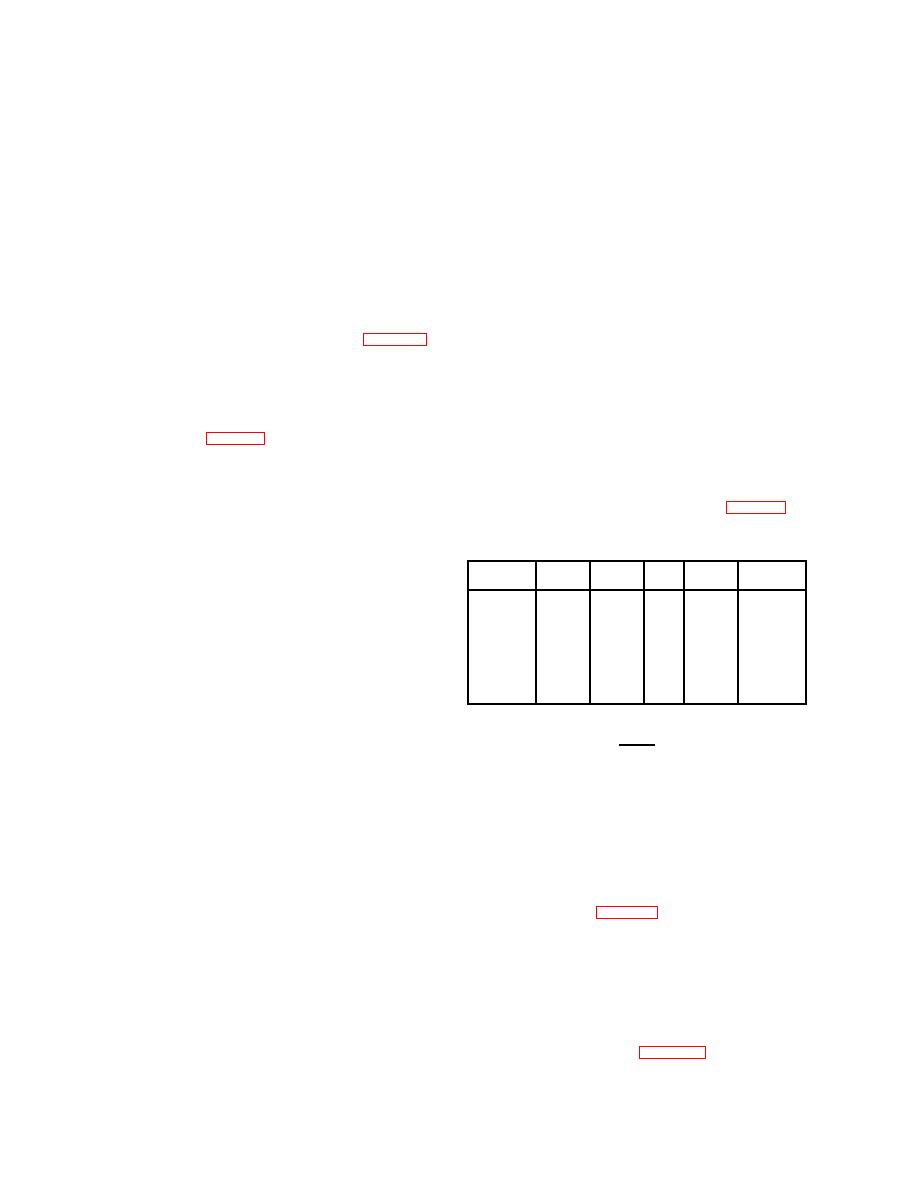
SB 742-1
(e) Linked ammunition consisting of one
the local lot number.
Ammunition Data Cards are not
component type and lot number will bear the lot number
required for these lots.
of the component lot, and an "L" will be used in the lot
(8) CONUS posts, camps or stations without
number to indicate functional pack. In some cases SAA
adequate personnel and facilities to perform inspection
will qualify for two identifier codes in place of a hyphen in
and processing of SAA will report through command
the lot number (reference MIL-STD-1168A). In those cases
channels to JMC according to DA PAM 738-750 for
where the functional pack identifier "L" conflicts with
disposition.
another identifier code, the "L" will be dropped and the
other code will be used.
d. Repack of small caliber ammunition. The following
criteria is to be used when repacking stocks of
(f) Dummy small arms ammunition.
ammunition
through
caliber
.50
to
different
1 Inspect dummy cartridges for such
configurations:
defects as damaged extractor groove/rim, damage which
(1) All lots must be certified for use in the may preclude use, corrosion, and loose bullets.
weapon(s) for which they are being repackaged.
2 Dummy cartridges with defects other
Certification for each lot will be obtained by furnishing a
list of component lots to the office in para 1-5d(1). than those specified above will be considered serviceable
Request for lot certification will indicate date repack is to as long as their intended purpose is unimpaired and they
start, designate the NSN to which ammunition will be can be identified as dummy.
repacked, and must be received by JMC at least three
e. SAWS ammunition (5.56-mm cartridge, models
months before the operation is scheduled to begin. Lots
not certified for use in weapons for which repack is being M855 and M856) not fully seated in metallic link belts or
accomplished will require testing. Tests will be arranged with incidental dents on cartridge case shoulder should
by the office in para 1-5d(1) upon request. Cost of tests not be rejected.
Such conditions do not affect
serviceability of ammunition.
must be borne by the requesting facility.
f. Load requirements for stockpile pull-testing of
(2) Serviceability criteria.
various SAA metal linked ammunition.
(a) Ammunition
will meet the
visual
(1) The load requirements listed in table E-4 will
inspection criteria specified by the appropriate Military
apply.
Standard.
(b) Restricted or suspended ammunition will
not be used in repack operations without specific
Type
#Belt
#Link
#Ct
L Tension
authorization or instructions from the commodity
s
s
gs
oad
Time
command.
5.56mm
10
6
6
19
30 sec
7.62mm
10
25
25
lbs.
30 sec
(c) Tracer lots will have more than one-half
Cal .30
10
25
25
25
30 sec
of the trace test interval remaining.
Cal .50
10
25
25
lbs.
30 sec
(3) Lot formation criteria.
25
lbs.
(a) Functional
lots
must
meet
the
80
requirements
of
appropriate
military
standards,
lbs.
specifications and drawings. The latest revision must be
used unless otherwise directed by the commodity
command. Small caliber ammunition assembled in metal
NOTE
link belts will be tested and inspected 100-percent
according to the appropriate portion of MIL-STD-644,
Inner pack and item samples must be selected
paragraph 5.1.6.
from a minimum of ten outer packs. Additional
outer packs must be inspected at either the
(b) No more than one lot of each component
inspection or storage location(s) to make a total
will be used in a functional lot.
sample size of twenty. Pull test does not apply
to caliber .50 M15A2.
(c) Functional lots will consist of a minimum
of 30,000 rounds, unless otherwise specified by the
(2) A belt consisting of the appropriate number of
commodity command. The maximum lot size will be
links and cartridges shall be capable of withstanding the
controlled by the size of the major component (Ball, AP,
appropriate tensile load without separation. Load shall be
API, etc.).
applied at a uniform rate and belt shall remain under
(d) When directed by the commodity tension as specified in Table E-4.
command, hybrid lots may be authorized. In such cases,
g. Classification of primer defects.
up to five major component lots and two minor component
(tracer) lots may be used so long as each component
(1) Visual standards for primer defects are
displays the head stamp from one manufacture (i.e., all contained in MIL-STD-636. The purpose of the standard
ball, all AP, all tracer, etc., have the same manufacturer). is to provide a standard basis for inspection of small arms
Year of manufacture may be disregarded. If two tracer ammunition at various small arms manufacturing
lots are used, there must not be a variance of over facilities.
10-percent in any element of their tracer test (satisfactory,
(2) Defect classification of special in MIL-STD-
blind, specification trace) results. Hybrid lots will not
636 is for new production. Table E-3 will be used for
exceed 250,000 rounds.
classification of primer defect criteria.


 Previous Page
Previous Page
